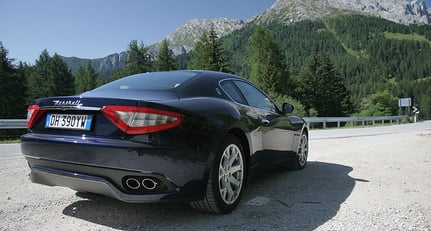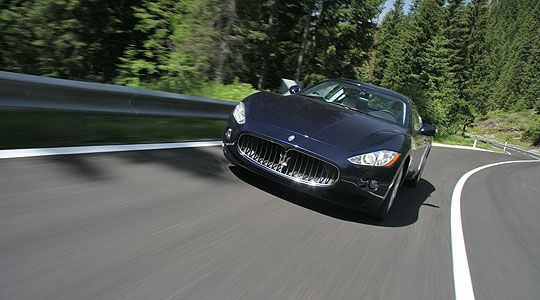
Maserati first shifted into the comfort zone in 2003, with the launch of the Quattroporte, but the new GranTurismo is even larger and more luxurious. The emphasis is on classical elegance rather than pure performance, firmly delineating the boundary between Maserati and Ferrari and focusing on the strengths which have seen the Modena marque reach new heights in terms of sales – after a very long time in the doldrums. Classic Driver took the new GT sportscar for a thorough test in the Dolomites.
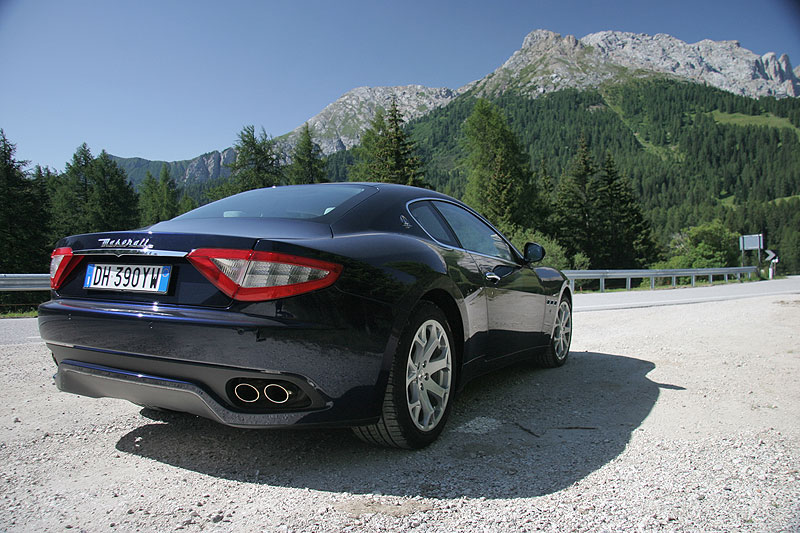
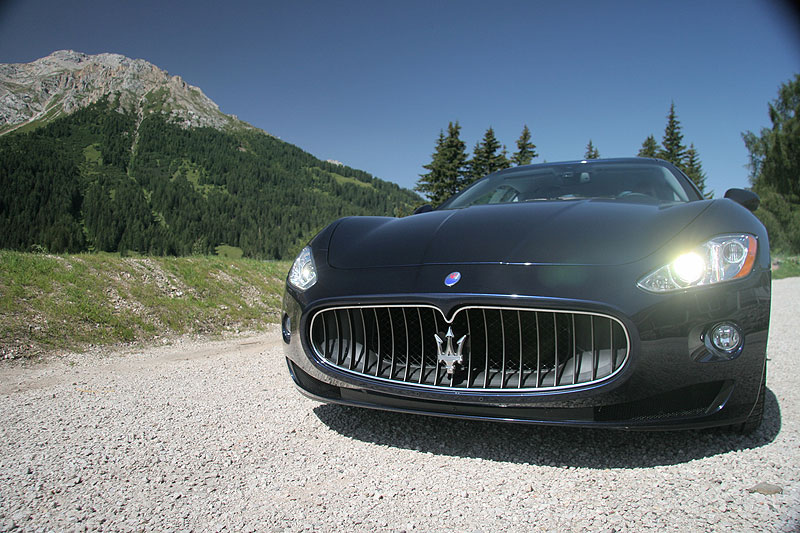
First things first: the Maserati GranTurismo is not a replacement for the Maserati 3200 GT and its last model update, the GranSport. Rather, the Italians see the large coupé as a sporty derivative of the hugely successful Quattroporte. While the last sportscar generation with its characteristic boomerang rear lights was typical of Giugiaro, the GranTurismo is clearly Pininfarina. The Turin studio produced Maserati designs as long ago as the 1940s and, after a long absence, created the celebrated stylistic idiom of the current Quattroporte. With the coupé, the studio has reverted to voluptuous curves and graceful proportions, the like of which have not been seen since Italian cinema of the 1960s (think Fellini, or Visconti).
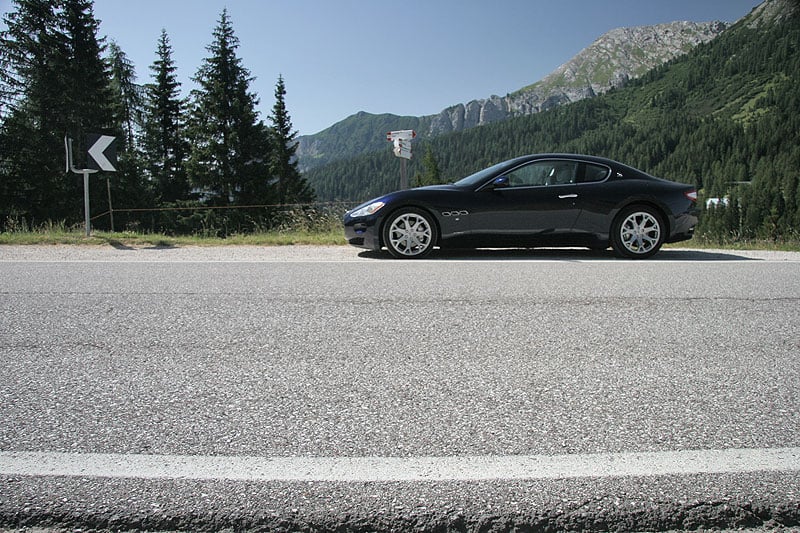
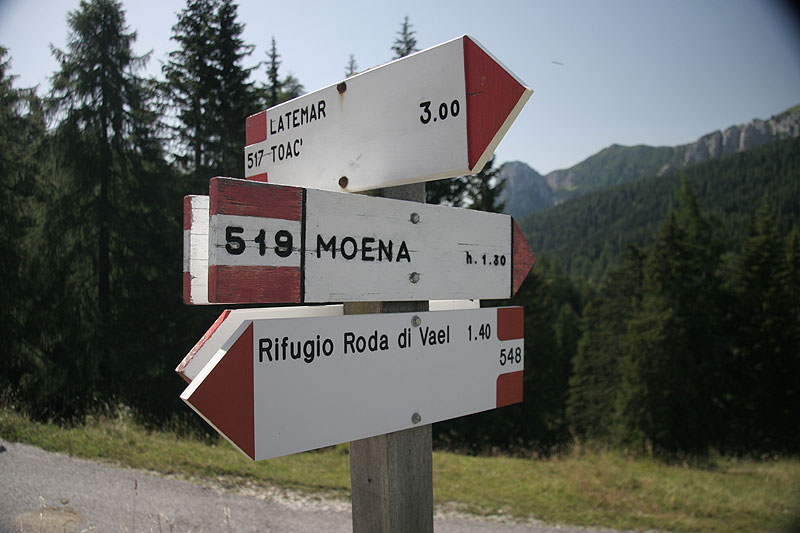
With its dramatic radiator grille and narrow-cut bi-xenon headlights, the dark-blue coupé waits patiently at base camp for the start of our mountain tour. Appearance is deceptive when it comes to the physical dimensions of the GranTurismo: it measures a whole 4.88m from the three-pronged emblem on the radiator to the rearmost corner of the triangular tail-lights and it weighs in at 1880kg. The Maserati GT is a genuine 2+2, accommodating rear passengers on long journeys in reasonable comfort and, while this could have compromised bootspace, there are still 260 litres and sufficient room for two sets of golfclubs.
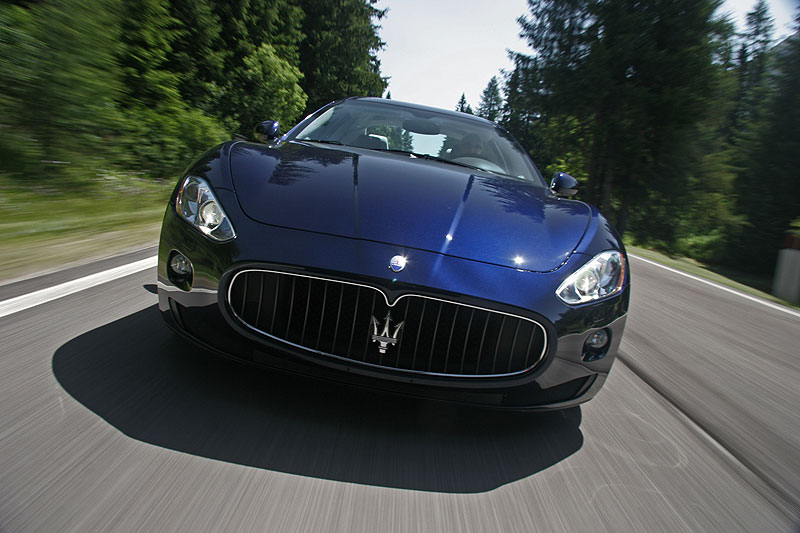
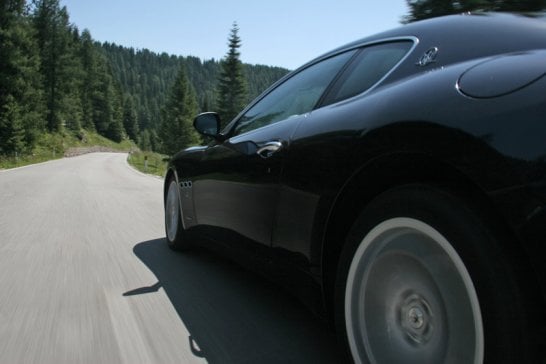
As soon as we set off for Passo Costalunga, the Maserati GranTurismo’s character becomes clear. The familiar Quattroporte six-speed automatic transmission is smooth and gentle, while the steering also reacts gently, but directly. The 4.2 litres of V8 engine sitting in front sound relatively calm on start-up, but after opening the throttle the hoped-for Maserati sound echoes from the exhaust pipes. With 405HP, the engine is well-suited to the motorway and also manages 0-62mph in 5.2 seconds. As we wind higher up the narrow zigzag roads, the powerful engine roars sharply and the true Italian sportscar soul comes to the fore. Soon we are tackling hairpin bends as though they were chicanes at Monza...
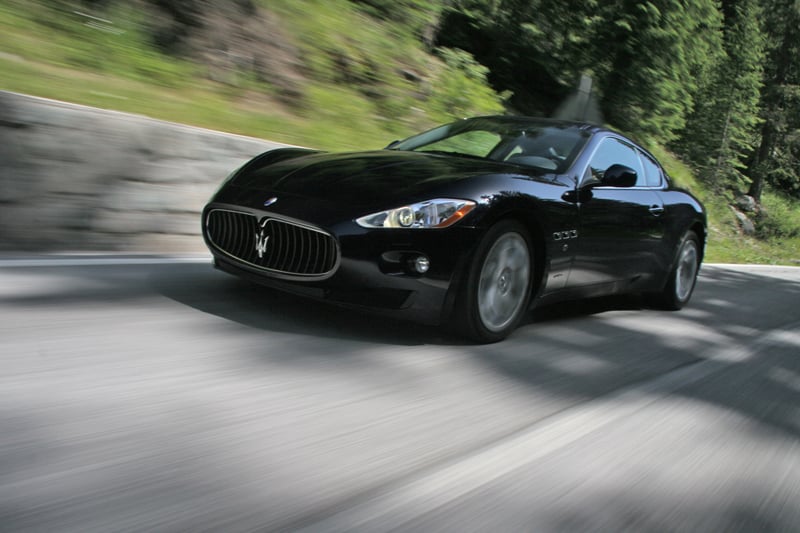
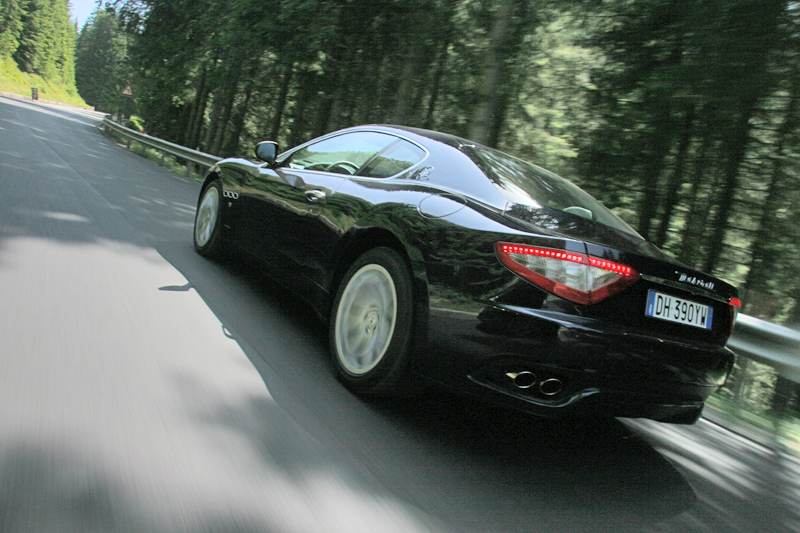
With the new model, Maserati has finally said goodbye to the heavy transaxle arrangement. The gearbox now sits behind the engine and transmits the driving force from there to the rear wheels. Yet the GranTurismo manages to achieve an almost ideal weight distribution of 49:51, due to the position of the eight-cylinder engine behind the front axle. My only criticism, when pressing on through the twisting roads (and with an abyss in front of us…), is that I’d like a bit more bite from the brakes. True, it can slow from 62mph to 0mph in just 35 metres – so the Brembo brakes hardly deserve criticism – but hard braking does require effort and a more direct reaction would be appreciated.
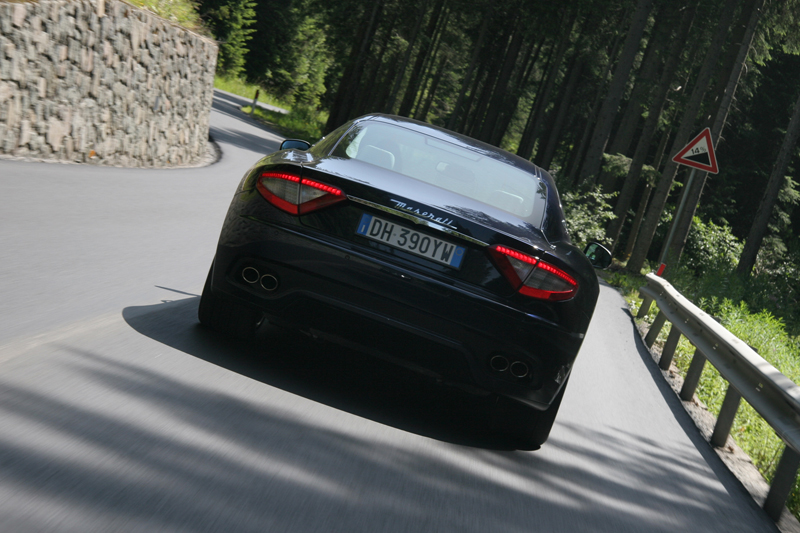
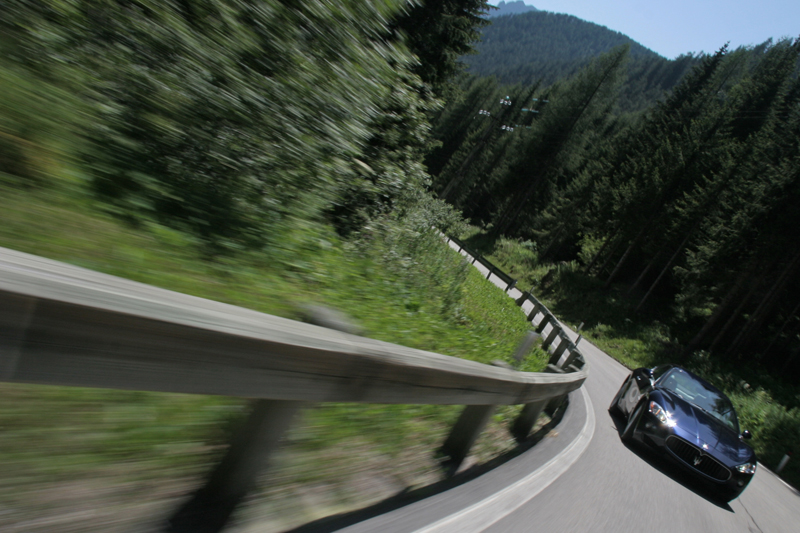
Within the European price of 112,280 euro, the Maserati GranTurismo comes with leather, an entertainment and navigation system, electrically-adjustable seats and air-conditioning as standard. Meanwhile, the future promises new model variants of the GranTurismo: a more powerful engine, and a convertible – which the American market demands. Maserati looks set to scale even greater heights.
Original text and photos: Jan Baedeker
Translation: Charis Whitcombe
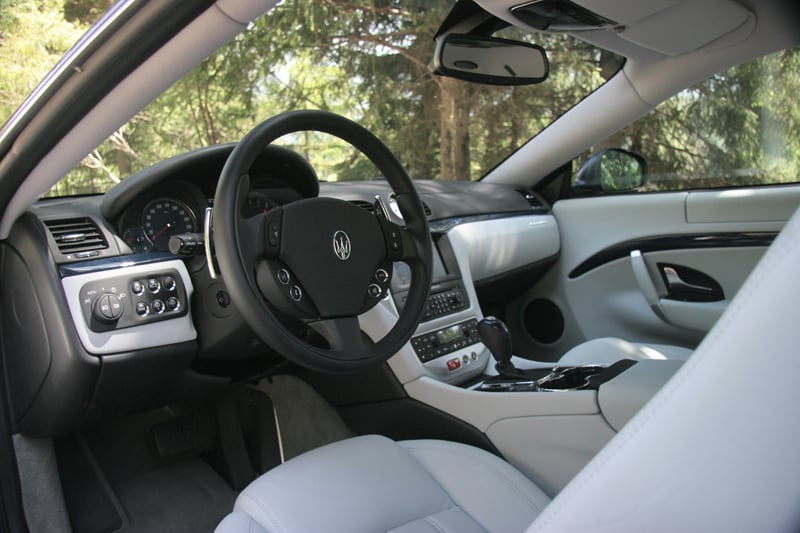
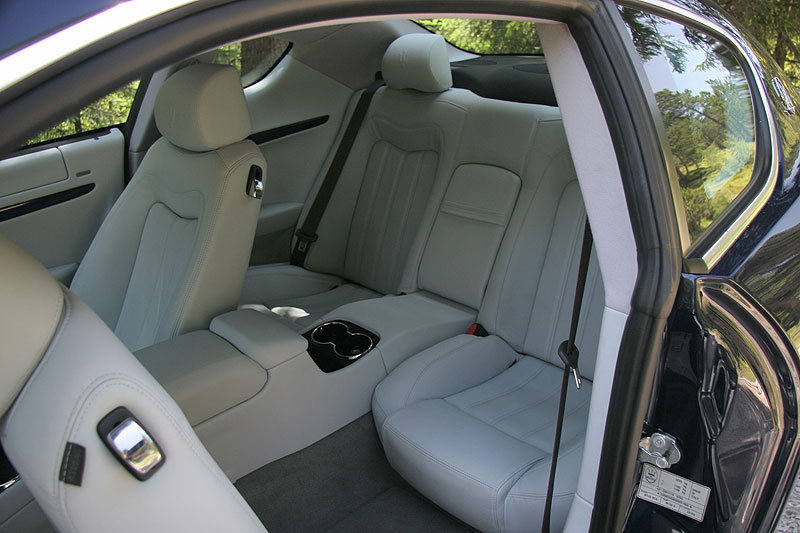
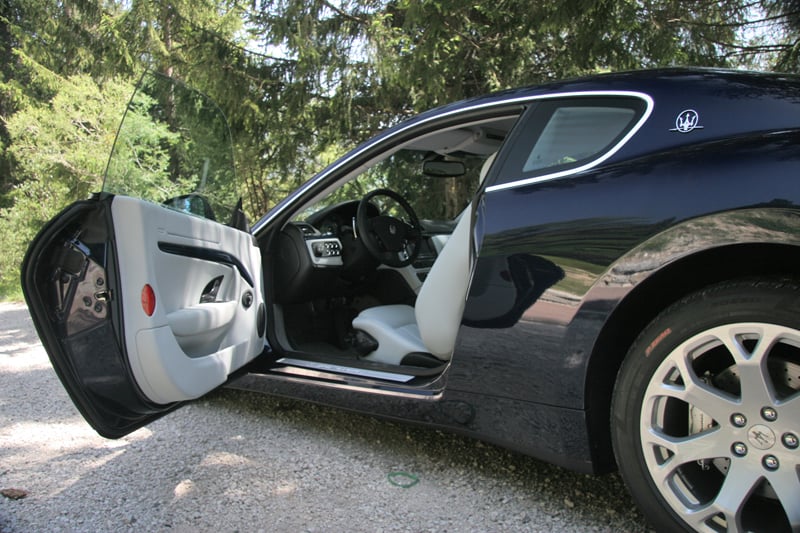
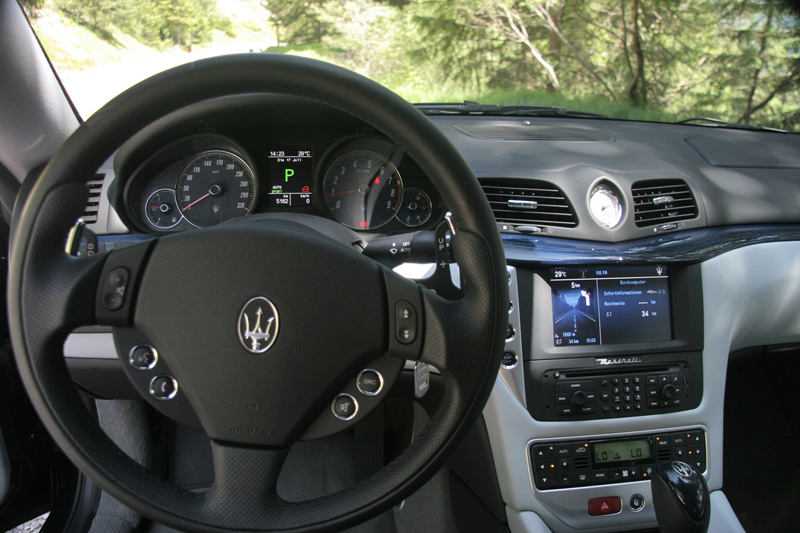
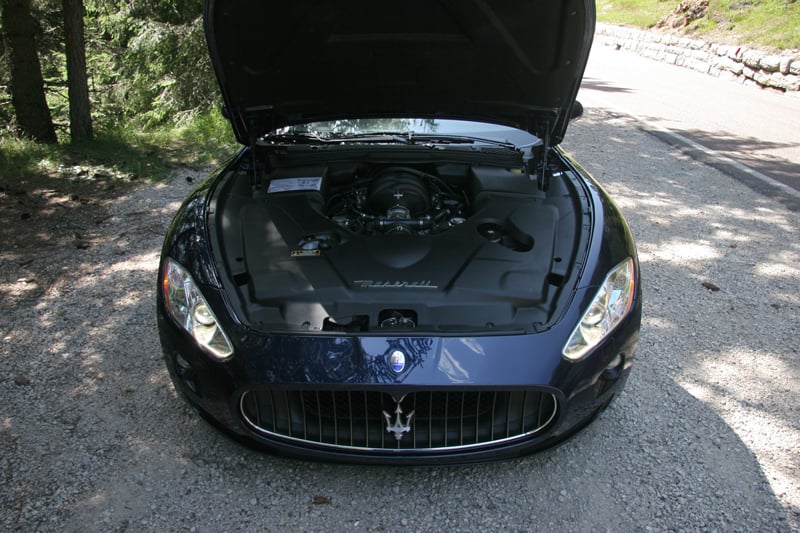
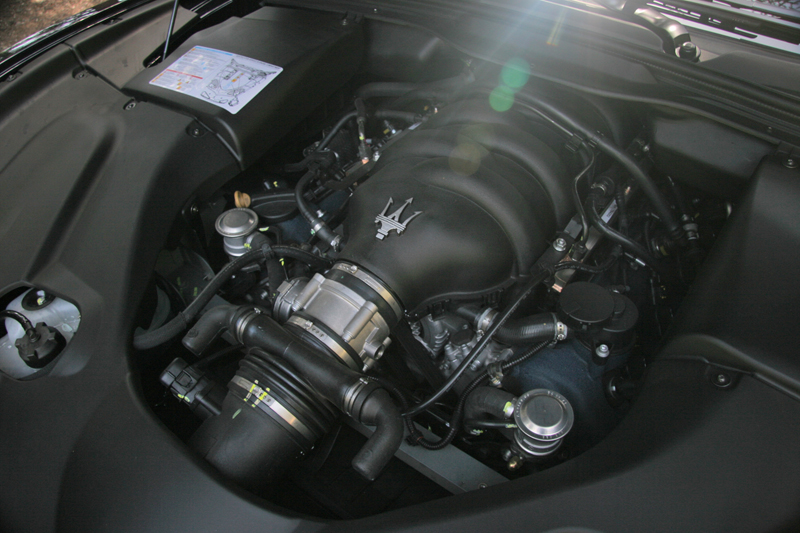
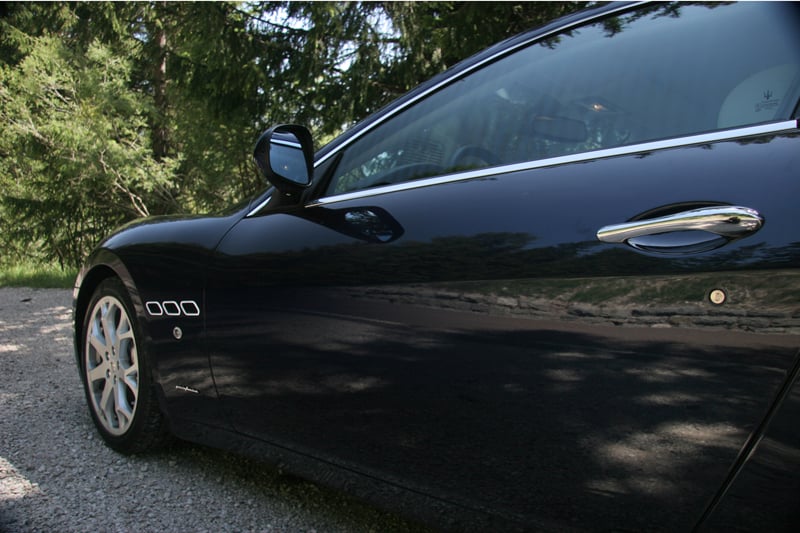
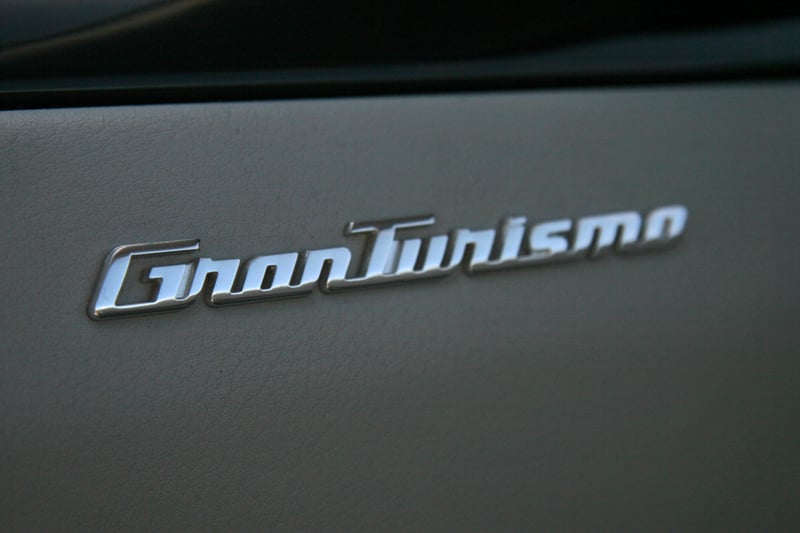
ClassicInside - The Classic Driver Newsletter
Free Subscription!
